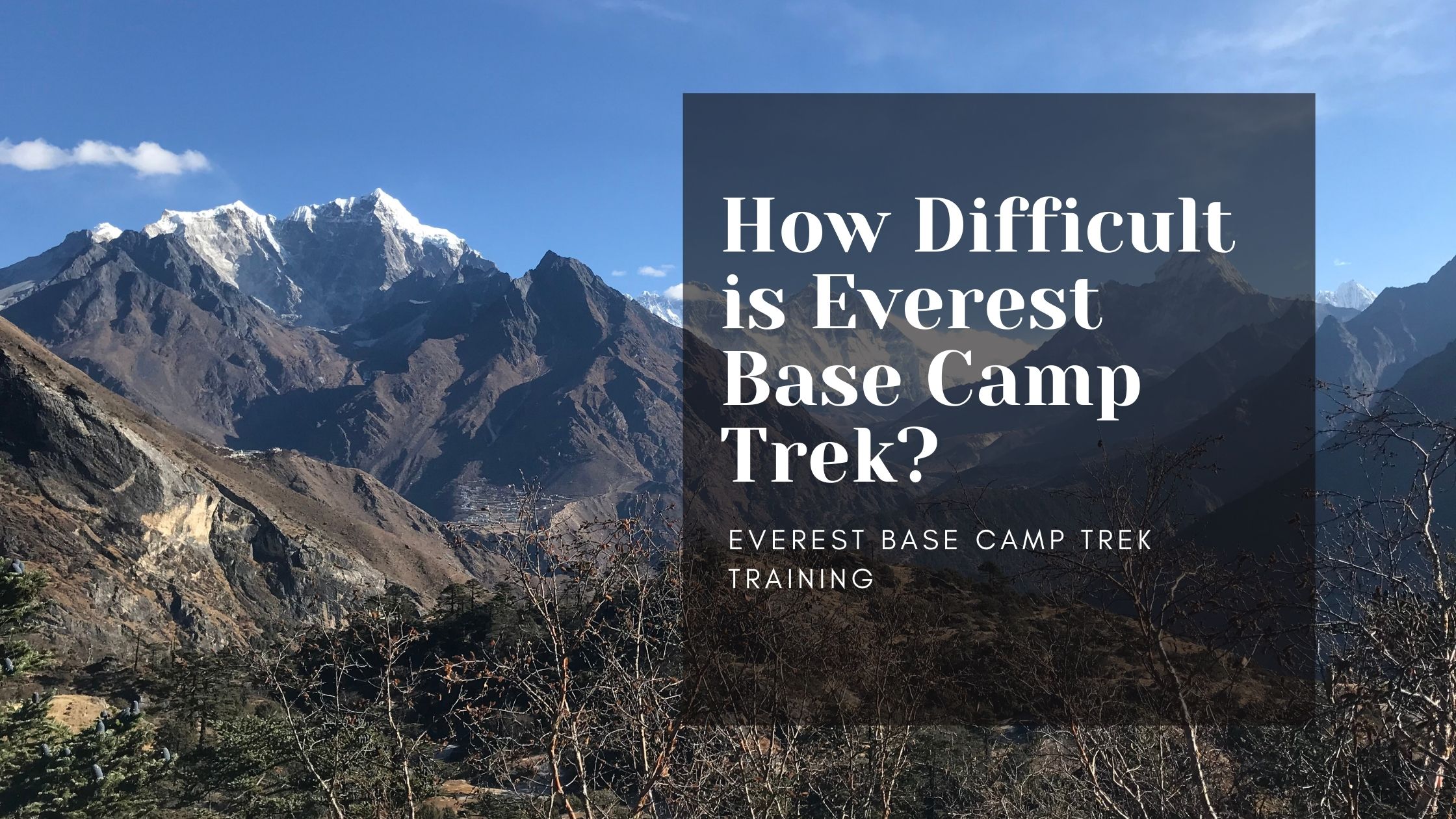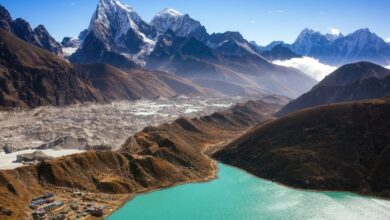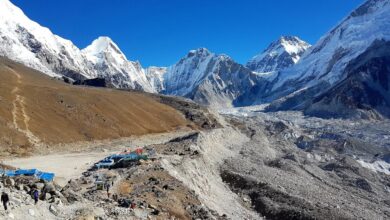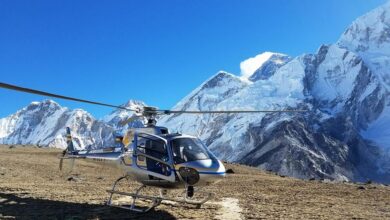ArticleEverest TreksTrekking in nepal
How to train for Everest base camp trek
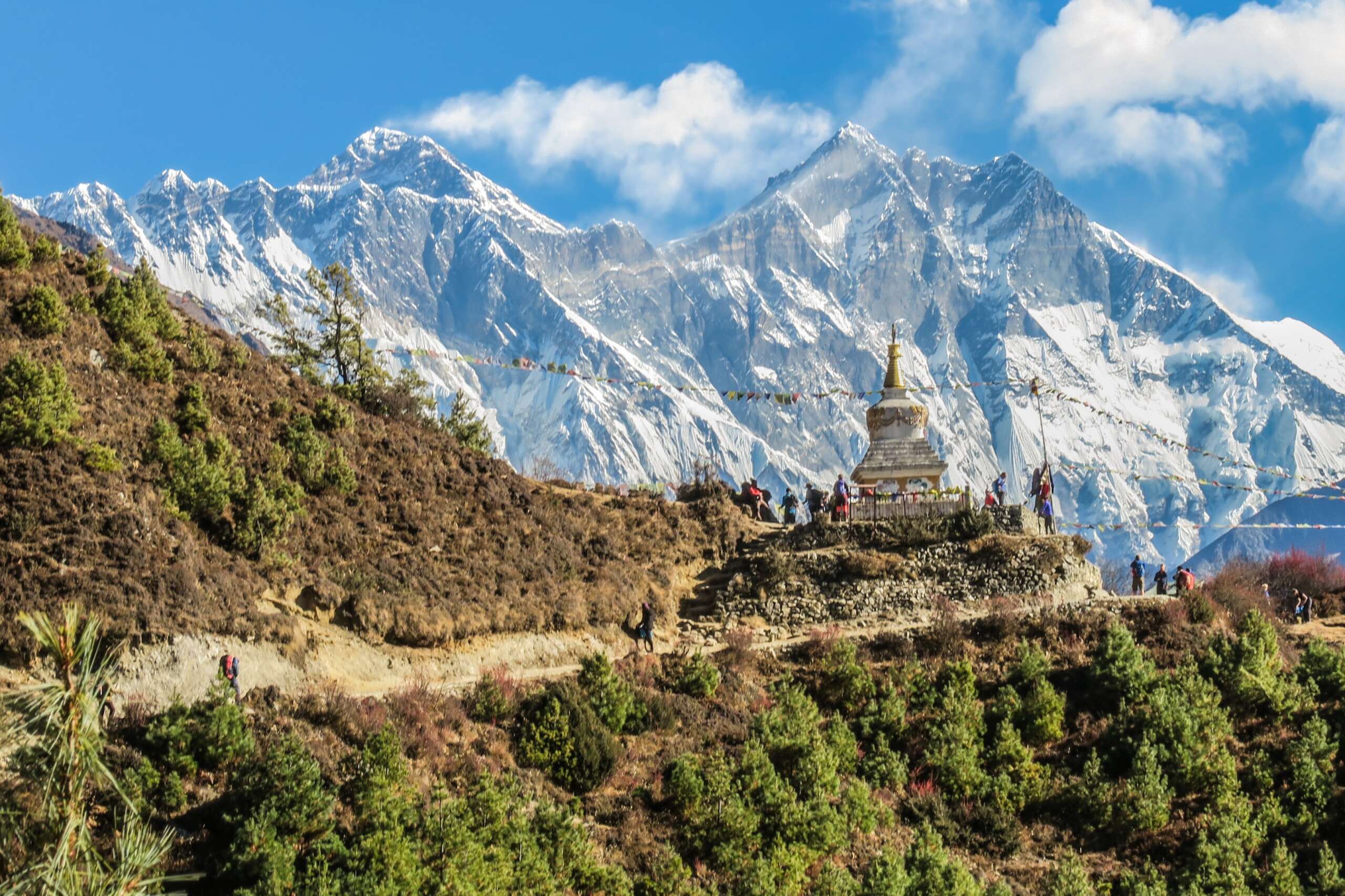
Complete Everest Base Camp Trek Training Guide
For trekkers, walking for 6-7 hours on the Himalayan trail sounds strenuous and difficult. Nonetheless, the entire trek is a spectacular mix of fauna and flora, hills, gorges, ridges, and glimpses of the Himalayan trail. The path to Everest Base Camp is not easy. However, no technical training or prior experience is required, though this will be an advantage for us.
Previous trekking/hiking experience, familiarity with high altitude, and workout will be beneficial during the trek. To prepare for the pressure of covering a long distance in a short amount of time, you should hike up hills and exercise to increase endurance and stamina before booking the trek.
Everest Base Camp Trek package
Consistency is essential. Not only for the trek but practicing improving your strength and endurance will benefit you for the rest of your life. Walking incline on a treadmill is an excellent way to begin indoors. Running, cycling, rowing, and swimming are some outdoor activities that will make you sweat.
Here are some calisthenics and workouts that you can do at home to improve your strength and endurance. We recommend doing three sets of 25-30 reps each. Squats and lunges Pull-ups Push-ups Dibs Plank Stretching
Similarly, altitude training is essential. To acclimate to higher altitudes than you are used to, we recommend walking or hiking up hills in your neighborhood. It is critical to understand the importance of walking high and sleeping low while on the trek.
Walking slowly and steadily will also help your body acclimate. Rest days are also essential during the trek. We will not sleep in our beds, but will instead move around and become acquainted with the surroundings and elevation.
Training our mental state is perhaps the most important aspect of training. Asia, and particularly Nepal, is culturally, geographically, politically, and socially distinct from other Western countries.
It must be mentally tough to deal with cultural differences, especially if we have never traveled outside of our country. Similarly, mentally preparing for the entire journey will be required.
Walking for longer periods with only necessities available can be strenuous and mentally taxing. The strongest point you can achieve before beginning the trek is mentally preparing for what will happen.
Are you planning your long-awaited Everest Trekking? Here are some preparation tips to help you stay physically and mentally strong throughout your journey.
Few tips for Everest base camp trek training
Preparation of the Mind
Life in the mountains will bring you back to your roots. Locals in the mountains are drawn to minimalism and simple living in difficult circumstances. Be mentally prepared to accept that you will be living in similar situations throughout your journey.
Although the Everest Region has been celebrated and even commercialized over the years, the conditions are still far from luxurious (unless you choose to travel luxuriously). In the mountains, basic amenities are available. A hot shower, meal options, and WiFi are available in almost every part of the trek.
Nonetheless, living and eating conditions are basic, with few options. If you enjoy being outside, you might not mind the difficult landscapes, slippery/muddy trails, limited showering, and nature calling in the middle of the trek.
However, if you have no prior experience trekking or camping in outdoors, you may need to mentally prepare for these situations. Although there are tea houses along the way, the camping experience will help you understand how to live in confined spaces.
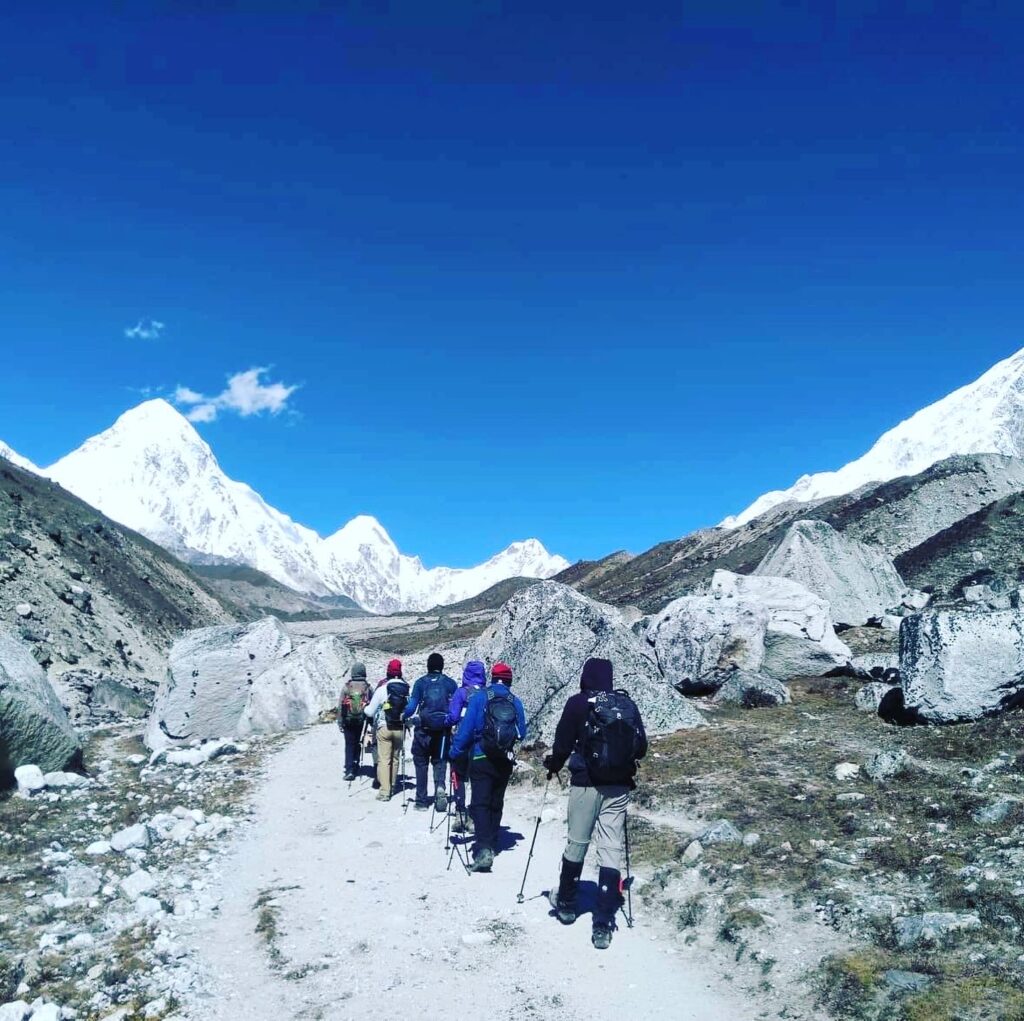
Fortifying cultural shock
Understanding cultural diversity and cross-cultural communication are also important, and it is part of preparing your brain for a cultural shock. From crazy traffic to cows basking in the sun in the middle of the streets, foreign countries may feel out of control, but we must understand how different parts of the world operate. Cultural shock may also occur as we encounter contrasting societal views and ideas, particularly in the villages.
Fitness (Cardiovascular endurance, strength )
Trekking in the Himalayas has become so popular in the Western world that many people overlook the fact that it remains difficult and requires a certain level of fitness. Although the difficulty is moderate, our bodies will become weak as a result of the environment and physical conditioning.
Thus, serious training for 2-3 months before departure for the trek will come in handy during the trek, and you will thank yourself later. Cardiovascular exercises are beneficial for maintaining endurance while climbing/walking 7-8 hours per day. Strength training can help you carry your backpack for the duration of the trek (and you might as well have to carry your partners’!)
Altitude training
Perhaps the most important aspect of the training is preparing for acclimatization. We’ll need at least two days to adjust to the altitude. These “rest days” will be filled with hiking and exploring activities to warm up our bodies at that altitude. Hiking for several hours and camping, if possible, is a good way to spend your weekend as training. A typical day on the trek consists of 6-7 hours of uphill and downhill walking. To get there, we must keep up with our pace and keep walking!
Let’s talk about food
Nutrition is essential whether you are hiking up to the foothills of Everest or spending your day at home. Proper nutrition and hydration are essential for living a healthy and happy life. You will need to stay on top of your game, especially if you are challenging yourself for the next 2-3 weeks. Give your body fuel in the form of proper nutrients. As you train harder for the trek, pay attention to what your body desires. Moderation is essential.
How Can Breathing Exercises Improve Your Trekking Performance?
Breathing exercises can play a crucial role in enhancing your trekking performance, especially in high-altitude regions. Here’s how:
1. Boost Lung Capacity
High altitudes come with thinner air and reduced oxygen levels, which can cause shortness of breath and fatigue. Breathing exercises help increase lung capacity, enabling you to take in more oxygen with each breath. This means less huffing and puffing as you ascend.
2. Improve Oxygen Efficiency
Mastering conscious breathing techniques can optimize how your body uses oxygen. Techniques like diaphragmatic breathing ensure that you are getting the most oxygen out of each breath, which in turn improves endurance and reduces tiredness.
3. Enhance Blood Circulation
Practicing specific breathing exercises, such as those found in pranayama (a yoga practice focusing on breath control), can enhance blood circulation. Better circulation means that oxygen and nutrients are more efficiently delivered to muscles, aiding in recovery and performance.
4. Regulate Body Temperature
Breathing exercises also help regulate your body temperature. In challenging environments, maintaining a stable body temperature can be vital for your comfort and stamina.
5. Mental Calmness and Focus
Deep, controlled breathing can have a calming effect on your nervous system. This mental clarity helps you focus on the journey, making it easier to tackle tough terrains and unforeseen challenges.
Techniques to Practice
- Diaphragmatic Breathing: Focus on expanding your belly as you inhale deeply, rather than just your chest. This technique engages your diaphragm and improves lung efficiency.
- Box Breathing: Inhale for 4 counts, hold for 4 counts, exhale for 4 counts, and pause for 4 counts. Repeat to enhance mental focus and oxygen use.
- Pranayama: Various exercises within pranayama, such as Nadi Shodhana (Alternate Nostril Breathing) and Kapalabhati (Skull Shining Breath), can be particularly effective for trekkers.
Incorporating these breathing exercises into your daily routine can significantly elevate your trekking performance, making high-altitude adventures more enjoyable and less strenuous.
What Dietary Changes Can Boost Your Immune System Before a Trek?
Prioritize Fresh, Whole Foods
Before embarking on a trek, it’s essential to fortify your immune system, and your diet plays a pivotal role in this. Start by incorporating plenty of fresh vegetables and fruits into your meals. These foods are rich in vitamins and antioxidants that help your body combat infections. Leafy greens, berries, oranges, and bell peppers are excellent choices.
Opt for Lean Proteins
A protein-rich diet is essential for muscle repair and growth, especially important when you’re gearing up for physically demanding activities like trekking. Include lean meats such as chicken and fish, along with beans, nuts, and dairy products. These sources of protein provide essential amino acids that are crucial for maintaining your body’s defenses.
The Power of Vitamins and Minerals
Don’t underestimate the importance of specific vitamins and minerals. Vitamins C and D are particularly beneficial for immune support. You can find Vitamin C in citrus fruits, strawberries, and broccoli. For Vitamin D, consider fatty fish like salmon and fortified dairy products. Additionally, ensure adequate intake of magnesium and zinc, which are found in foods like seeds, nuts, and whole grains.
Limit Processed Foods
Processed and fast foods are often high in unhealthy fats and sugars, which can weaken your immune system. Aim to reduce your intake of these foods and replace them with more nutritious options. Instead of reaching for a bag of chips, try snacking on nuts or fresh fruit.
Stay Hydrated
While often overlooked, staying hydrated is key to maintaining a strong immune system. Drink plenty of water throughout the day and consider herbal teas that can provide additional immune-boosting benefits.
In summary, a well-rounded diet rich in fresh produce, lean proteins, and essential vitamins and minerals can significantly boost your immune system before a trek. Avoiding processed foods and staying hydrated will further enhance your body’s ability to ward off infections, ensuring you stay healthy and energized on your journey.
What is ‘Pranayama’ and How Can it Help with High-Altitude Trekking?
Pranayama is a series of breathing exercises originating from ancient yoga practices. The term itself comes from Sanskrit, where ‘prana’ means life force or breath, and ‘yama’ means control. Essentially, pranayama focuses on the deliberate regulation of your breath to enhance physical and mental well-being.
Benefits of Pranayama for High-Altitude Trekking:
- Improved Lung Capacity:
- At high altitudes, the air is thinner, which means there’s less oxygen. This can lead to shortness of breath and fatigue. Pranayama exercises teach you how to maximize oxygen intake, improving your lung capacity and making high-altitude trekking less strenuous.
- Enhanced Blood Circulation:
- Proper breathing techniques boost your blood circulation, ensuring that more oxygen is delivered to your muscles. This can mitigate the effects of altitude sickness and keep you energized during your trek.
- Better Temperature Regulation:
- The consistent practice of pranayama helps in maintaining an optimal body temperature by balancing your internal systems. This can be particularly useful in the fluctuating climates often encountered at high altitudes.
Key Pranayama Techniques for Trekkers:
- Anulom Vilom (Alternating Nostril Breathing):
- Helps in balancing your nervous system and reducing stress, which is crucial for maintaining focus and stamina during long treks.
- Kapalabhati (Breath of Fire):
- This involves short, explosive exhales and passive inhales which cleanse your respiratory system and energize your body rapidly.
By integrating pranayama into your pre-trek preparations, you can significantly enhance your physical resilience and mental clarity. This ancient practice can transform your high-altitude adventure into a more manageable and enjoyable experience.
Benefits of Interval Training Before Your Everest Base Camp Trek
Improved Cardiovascular Endurance
Interval training alternates between high-intensity exercise and periods of lower intensity or rest. This method significantly boosts cardiovascular endurance, which is crucial for the challenging altitude of the Everest Base Camp. Enhanced cardio fitness helps your heart and lungs work more efficiently, giving you the stamina needed to navigate the trek’s demanding terrain.
Increased Fatigue Resistance
High-altitude trekking can quickly sap your energy. Interval training improves your muscles’ ability to resist fatigue. It conditions your body to handle extended periods of physical exertion, ensuring you can keep going even when faced with steep ascents and rocky paths.
Enhanced Recovery Times
One of the key benefits of interval training is its ability to speed up recovery times. By regularly exposing your body to high-intensity exercises followed by rest, your body learns to recover more quickly. Efficient recovery is essential for multi-day treks, allowing you to tackle each new day with less muscle soreness and more energy.
Better Oxygen Utilization
At high altitudes, oxygen levels are lower. Interval training can improve your body’s ability to transport and utilize oxygen more effectively. This adaptation is vital for maintaining performance and reducing the risk of altitude sickness, making your trek safer and more enjoyable.
Mental Toughness
The demanding nature of interval training also boosts mental resilience. Pushing through high-intensity intervals can prepare you mentally for the challenges you’ll face on the trail. This mental preparedness can be just as important as physical fitness, helping you stay focused and motivated throughout your journey.
Summary
Incorporating interval training into your pre-trek regimen offers numerous benefits, from improved cardiovascular endurance and fatigue resistance to faster recovery times and better oxygen utilization. Additionally, it helps build the mental toughness necessary for a successful and enjoyable Everest Base Camp adventure.
Preparing for an Everest Base Camp Trek: The Benefits of Starting with Easier Treks
Starting with easier treks at higher altitudes is an excellent strategy for preparing for a challenging adventure like the Everest Base Camp Trek. Here’s how it helps:
1. Acclimatization: Gradual exposure to high altitudes helps your body acclimate. Beginning with moderately difficult treks like the Inca Trail or climbing Mount Toubkal in Morocco introduces your body to thinner air and lower oxygen levels. This experience is crucial for reducing the risk of altitude sickness during more demanding treks.
2. Building Endurance: Completing easier treks helps build physical endurance. It’s essential to develop stamina and muscle strength that can withstand long hours of trekking at high altitudes. Opting for treks such as the Annapurna Base Camp Trek lets you gain experience in managing long routes, steep ascents, and varying weather conditions, all of which are typical of the Everest Base Camp Trek.
3. Improving Trekking Skills: Gaining trekking experience is key to successful expeditions. Broader trails provide an opportunity to practice essential trekking skills, from setting a steady pace to mastering the use of trekking poles and navigating uneven terrain. These skills will be invaluable when facing the rugged paths leading to Everest Base Camp.
4. Testing Gear and Equipment: Smaller treks allow you to test and familiarize yourself with gear and equipment. From backpacks to boots, understanding what works for you in terms of comfort and functionality is crucial. Fine-tuning your gear on less demanding treks ensures that you are well-prepared and well-equipped for Everest.
5. Mental Preparation: Easier treks offer a preview of the mental challenges posed by high-altitude trekking. The sense of achievement from completing shorter, lower-altitude treks builds confidence and mental resilience, which is essential for tackling the more formidable Everest Base Camp Trek.
By starting with these accessible, yet demanding, treks, you build a solid foundation of experience, endurance, and confidence, making the Everest Base Camp Trek a more achievable and enjoyable goal.
Why is Downhill Training Crucial for an Everest Base Camp Trek?
Embarking on an Everest Base Camp trek is a thrilling adventure, demanding physical preparedness on multiple fronts. While many focus on uphill endurance, downhill training is just as essential for a successful journey. Here’s why:
Stabilizing Your Descent
Descending steep trails and stairs is a unique challenge. It requires not just strong legs, but also excellent stability and core strength. Without these, hikers risk losing balance and injuring themselves on uneven terrain.
Reducing Injury Risk
Proper downhill training conditions your muscles and joints to handle the high impact forces exerted during descent. This reduces the likelihood of strains, sprains, and other common trekking injuries.
Improving Overall Endurance
Descending can be deceptively exhausting. It demands different muscle engagement compared to ascending, often leading to quicker fatigue. Training for downhill trekking enhances your overall endurance, enabling a more comfortable and enjoyable hike.
Enhancing Trekking Efficiency
Confidence in your downhill trekking ability can speed up your descent and improve overall efficiency. Wasting less time on cautious steps means more time enjoying the breathtaking scenery and reaching milestones.
Boosting Mental Stamina
Preparedness for the mental toll of long descents is just as critical. Knowing you’ve trained specifically for downhill sections boosts mental stamina and keeps morale high throughout the trek.
To prepare adequately, incorporate balanced workouts focusing on leg strength, stability, and core exercises. Implement varied training methods, such as:
- Stair Descents: Practice descending multiple flights of stairs.
- Trail Running: Engage in running on uneven, downhill trails to simulate real trekking conditions.
- Strength Training: Include squats, lunges, and core routines to fortify the necessary muscles.
By emphasizing downhill training, you’re not only safeguarding your physical health but also setting yourself up for a more enjoyable Everest Base Camp experience.
How Does Understanding Heart Rate Training Contribute to Preparing for an Everest Base Camp Trek?
Training for an Everest Base Camp Trek isn’t just about logging miles; it’s about optimizing your body’s performance to handle extreme conditions. One of the most effective ways to prepare is through heart rate training. Here’s how understanding and utilizing heart rate training can significantly enhance your trek preparation:
Efficient Cardiovascular Conditioning
Heart rate training ensures you are working out within your optimal heart rate zones, which helps in building a strong cardiovascular base. This kind of conditioning is crucial when trekking at high altitudes where oxygen levels are lower. By training your heart to work efficiently, you can better manage strenuous activities with reduced fatigue and improved endurance.
Personalized Training Intensity
Every individual has a unique maximum heart rate. By understanding your heart rate zones, you can tailor your workouts to meet your specific fitness needs. This personalization ensures you aren’t overtraining or undertraining, both of which can negatively impact your trek performance. With the help of devices like Garmin or Polar heart rate monitors, you can track and adjust your intensity in real time.
Enhanced Recovery
Monitoring your heart rate during and after exercise helps you gauge how well your body is recovering. Quick recovery times are a good indicator of improved fitness and resilience, which are both essential for a demanding trek. Utilizing tools such as Heart Rate Variability (HRV) apps can give you deeper insights into your recovery patterns, helping you adjust your training load accordingly.
Aerobic vs. Anaerobic Balance
Heart rate training aids in balancing aerobic and anaerobic workouts. Aerobic exercise helps build endurance and stamina, while anaerobic exercise increases strength and power. Both are vital for a trek where you’ll encounter varied terrains and unexpected challenges. Tracking your heart rate allows you to mix these workouts effectively, making sure you are well-rounded in your physical preparedness.
Altitude Acclimatization
Training at different heart rate zones also mimics the varying levels of exertion you’ll experience during the trek. This can simulate the conditions you’ll face at high altitudes and helps your body adapt before you even set foot on the mountain. By gradually increasing the intensity of your workouts within your target heart rate zone, you ensure a safer and smoother acclimatization process.
Final Thoughts
Incorporating heart rate training into your Everest Base Camp Trek preparation can make a substantial difference. It not only optimizes your cardiovascular efficiency but also offers personalized insights into your fitness levels, ensures balanced training, and enhances recovery, all of which are critical for a successful trek.
Here is our advice!
Don’t overreach it, but don’t understate it either.
Walk, run, climb, eat well, exercise, be mentally prepared, and simply breathe! A positive attitude can make a big difference. Please let us know if there is anything we can do for you. You can contact us at info@amigotrekking.com or message us in our chat room, and we will respond as soon as possible.



